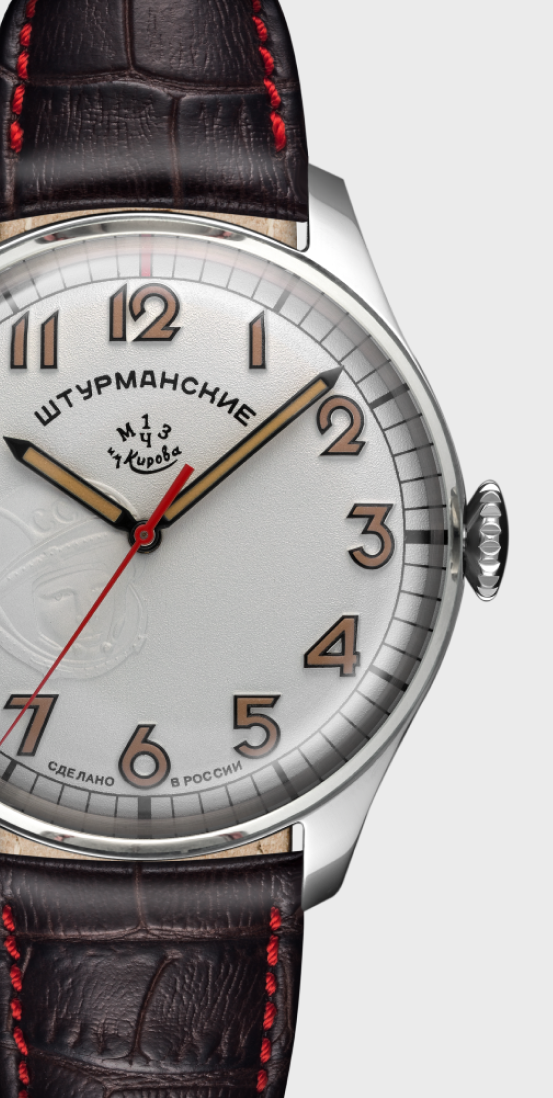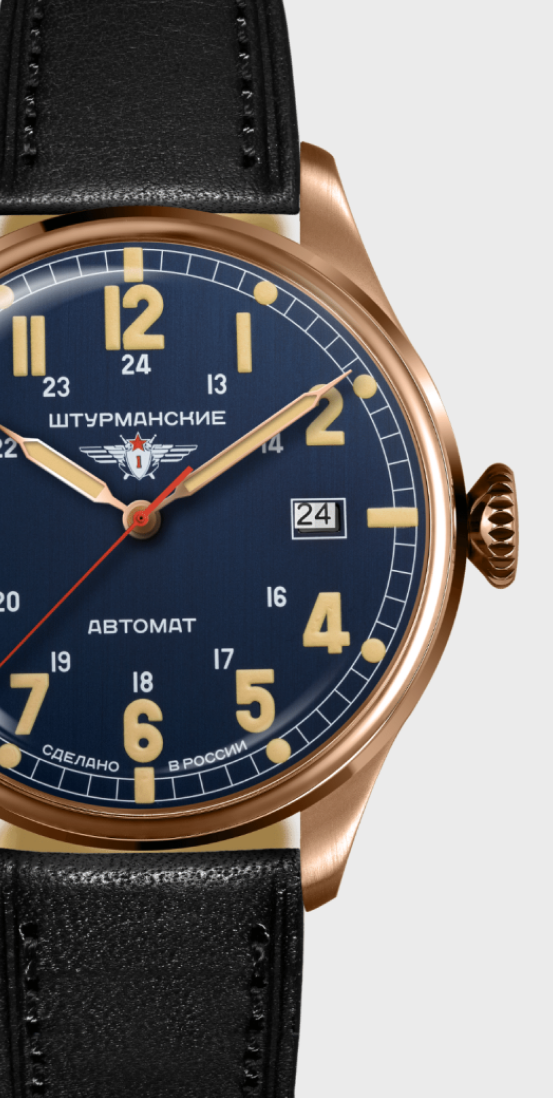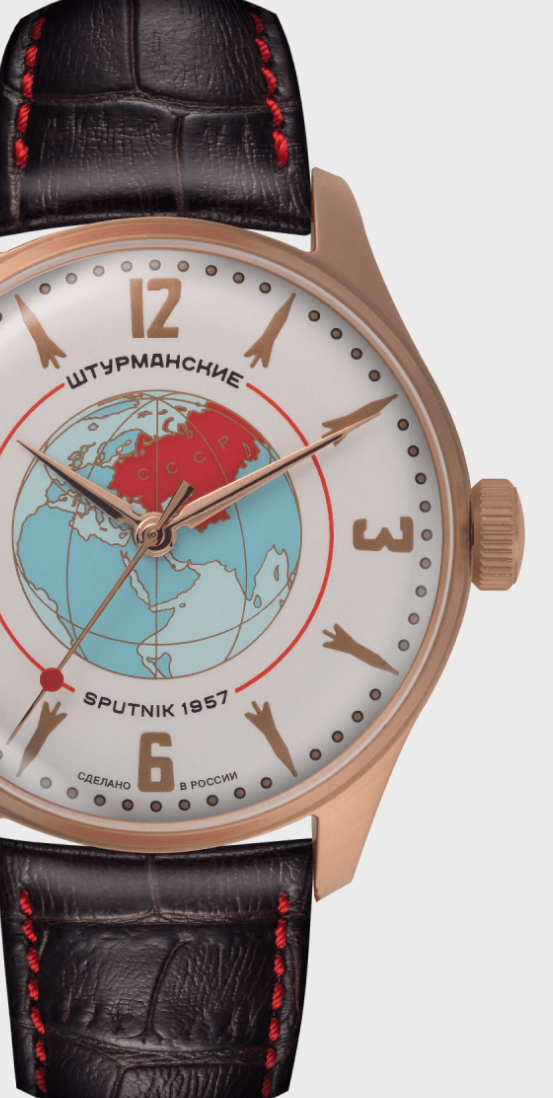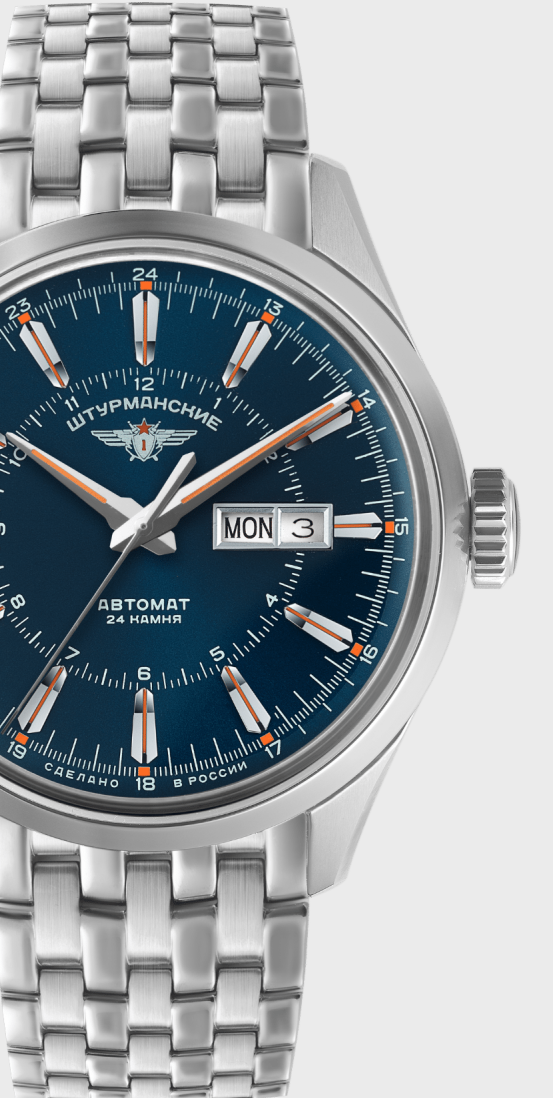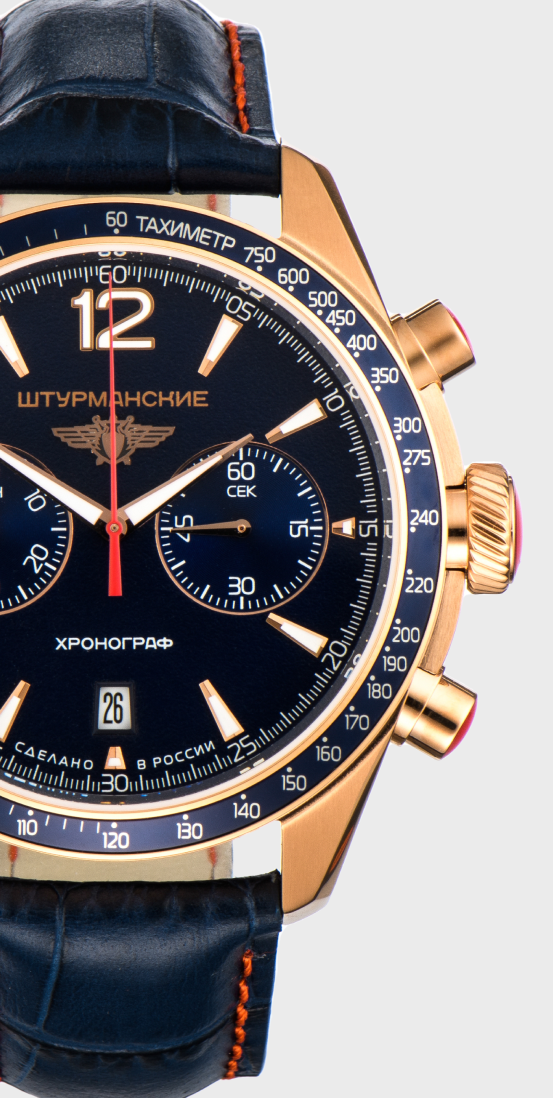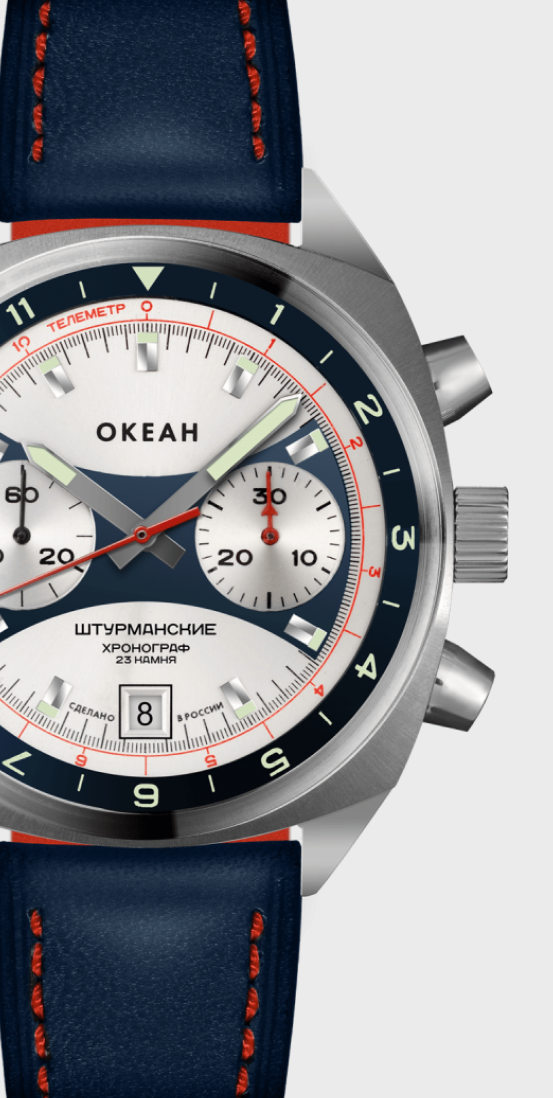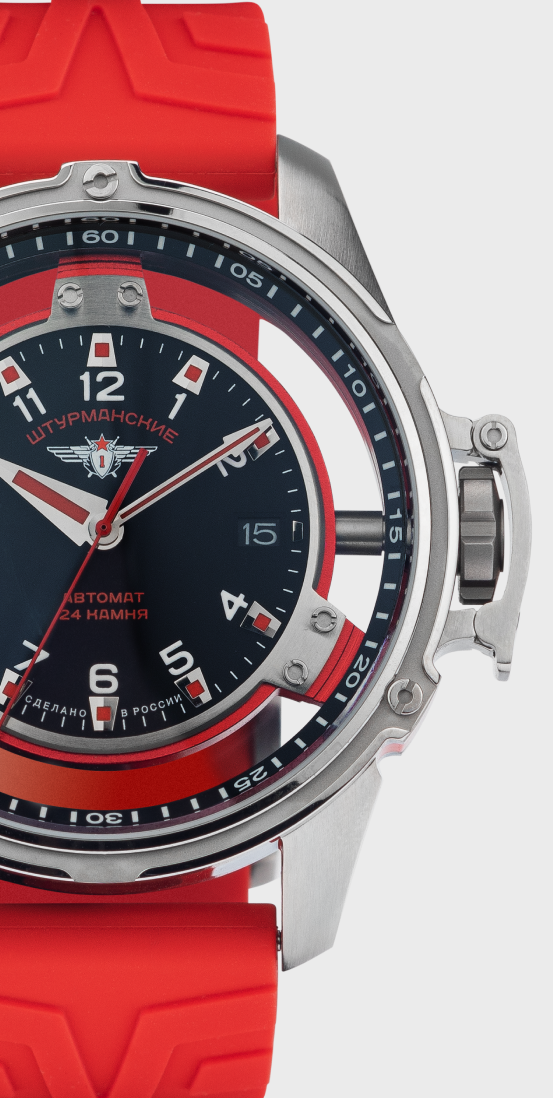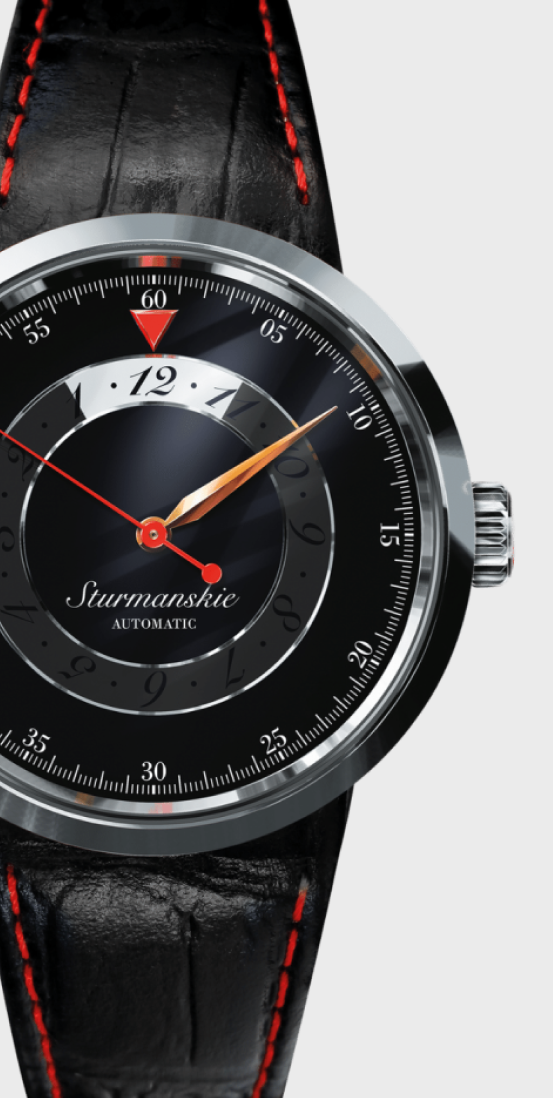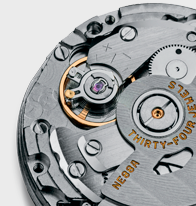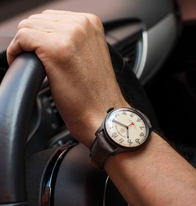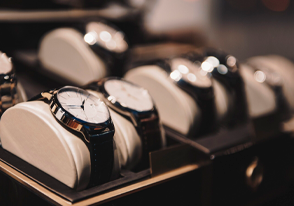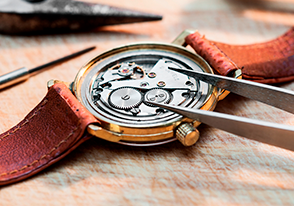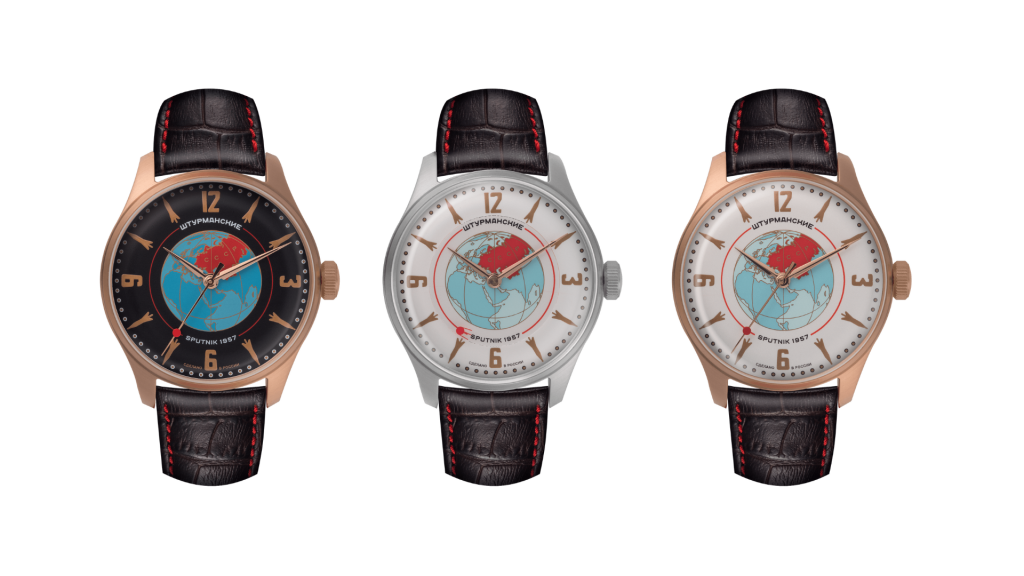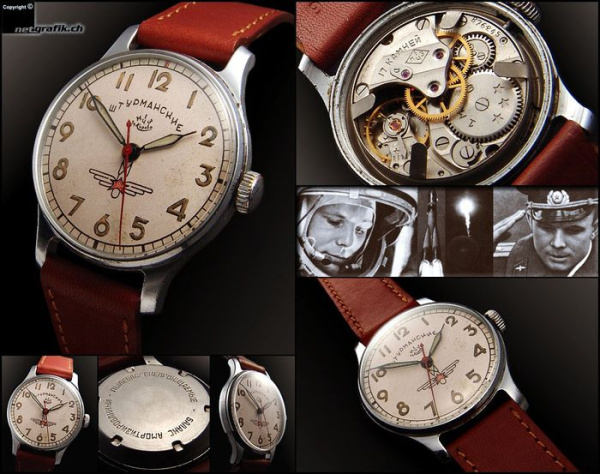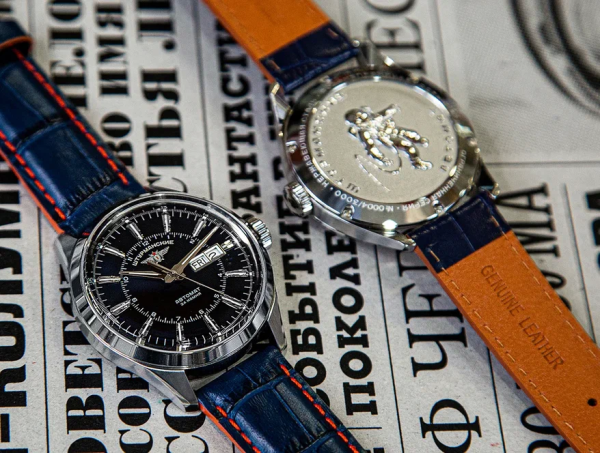Watches Pioneers of the Space
The Launch Of The First Artificial Earth Satellite
Various scientists globally have been studying ways to go beyond the Earth's atmosphere since the end of the 19th century. However, only in the middle of the 20th century, theory finally became reality.
On October 4, 1957, the Soviet Union was able to launch the first artificial satellite to orbit the Earth using the R-7 rocket, called Sputnik-1, its weight was only about 83 kg and diameter - 58 cm.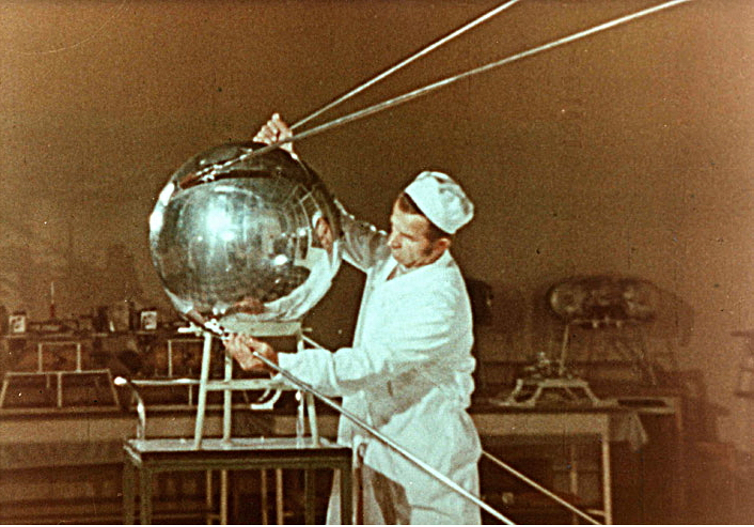
This "baby" was in space for about three months, and travelled about 60 million kilometers! By the way, Sergey Korolev, the great Soviet designer and "father of Russian cosmonautics”, was in charge of launching the first Earth satellite, as well as supervising the program of sending the first man into space 4 years later.
It was a great triumph for the USSR and the entire world!
In honor of this momentous event the 1st Moscow Watch Factory - the flagship of the Soviet watch industry at that time - produced a limited watch collection "Sputnik". Its design mainly corresponded to the occasion: the dial decorated with a blue globe with the USSR marked in red, also some of the dial numbers were replaced by signs in the form of rockets. A red "satellite" marker served as a seconds indication by moving along a red "orbit". Besides its decorations, the watch had excellent performance characteristics: a 34 hour power reserve and high accuracy.
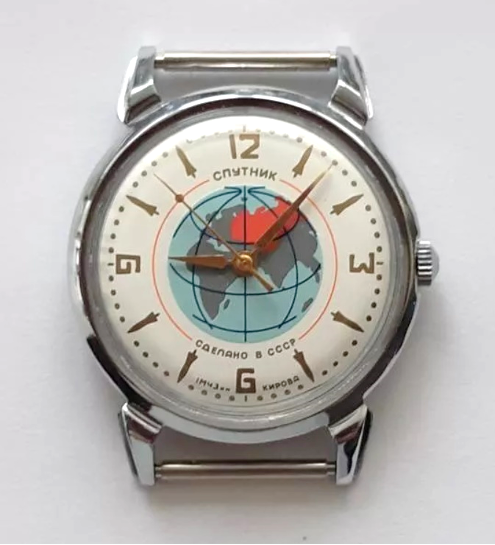
Unfortunately, “Sputnik” watches were produced in very limited editions, so they are rare to see in people’s collections.
Nowadays, remembering this unusual model and the significance of the event to which it was dedicated, “Sputnik” watch collection is produced under the brand name "Sturmanskie" at the former 1st Moscow Watch Factory. One of its pieces, the “Sputnik Heritage” watch, is a closest recreation of the original design of “Sputnik” from 1957 and is powered by a traditional Soviet-made movement 2609 Poljot.
The first zero-gravity explorers
Before launching a human into space, evaluation of unusual conditions and its effects on living organisms was important. For this purpose, a number of experiments were conducted including animals being sent into orbit inside the artificial satellites.
Only a few people know that before Yuri Gagarin's flight several dozen dogs were sent into space, as well as other living creatures: amphibians, insects, mice and rats, etc. In fact, many people interested in history of space exploration are familiar with this photo:
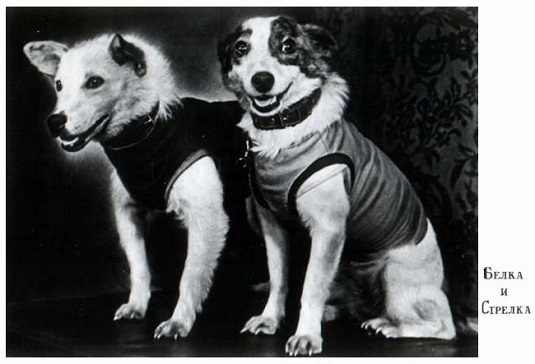
These two dogs are famous for orbiting “Sputnik 5” on August 19, 1960 for a day and being the first to return alive to Earth after.
Their names are Belka and Strelka. Yet, another little-known fact: initially the dogs had different names. However, Marshal M.I. Nedelin said to change dogs’ names to sound more "Russian" for press publications about the experiment. Although this page of the history of space exploration is not about watches, still there is a little patient Strelka (like a watch hand in Russian), who, according to the memories of witnesses, behaved very calmly and steadily during the mission.
Among other things, there is an assumption that the first watches were sent into space simultaneously with the dogs because it was necessary to check their work for the future first man that goes out there since it's important to control the time during a flight...
"Let's fly!"
Here comes the legendary day! On April 12, 1961, Soviet pilot Yuri Gagarin spent 108 minutes in orbit, making a full circle around the Earth in Vostok 1 ship at an altitude of up to 328 kilometers and a speed of nearly 29,000 kilometers per hour.
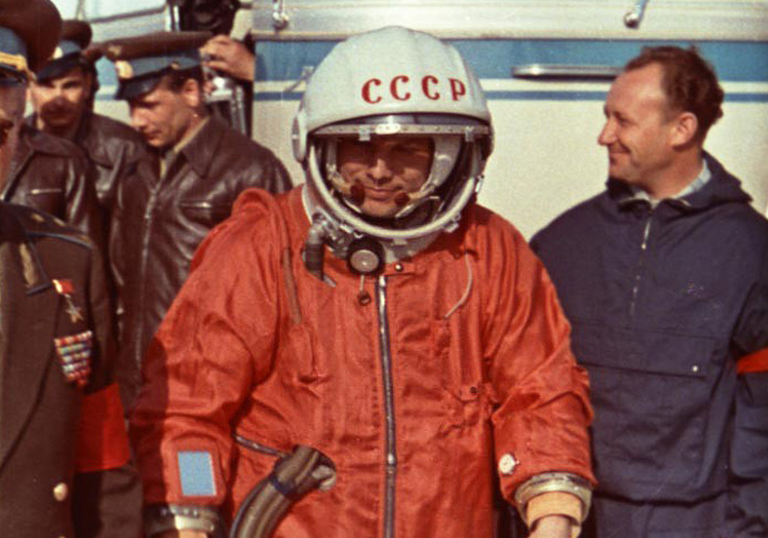
This information was published in most of the world's newspapers and is familiar to all who are interested in the topic till this day. Сonversely, a lot less people know how Yuri Gagarin actually became a cosmonaut, and certainly only a few know what watch was on his wrist when he completed this famous mission.
It actually went like this... Gagarin was not born to be the first man to fly to space. He was born in a small Smolensk region village in 1934, and his parents worked in a collective farm. From his early age Yuri had an outstanding personality and strength of will and by 1955 he attended the flying club in Saratov and, despite the fact that he graduated from industrial technical school and could become a master of industrial training, he felt his desire to fly. Therefore, when he was called up for military service, Gagarin was able to enroll in the 1st Chkalov Military Aviation School named after K. E. Voroshilov. During his studies his instructors noticed his talent as a pilot.
Two years later, Yuri Gagarin graduated from the school and received his diploma with honors and the first "Sturmanskie" watch, which was then issued to all graduates of flying school and Soviet Army as part of the uniform.
"Sturmanskie" watches have been produced by the 1st Moscow Watch Factory since 1949. Their first watch was powered by 15 jewel caliber, based on the French R26 by LIP SA d'Horlogerie (the Soviet Union acquired its technology back in 1936 to launch one of the first watch factories in the country). Here is what this watch looked like:
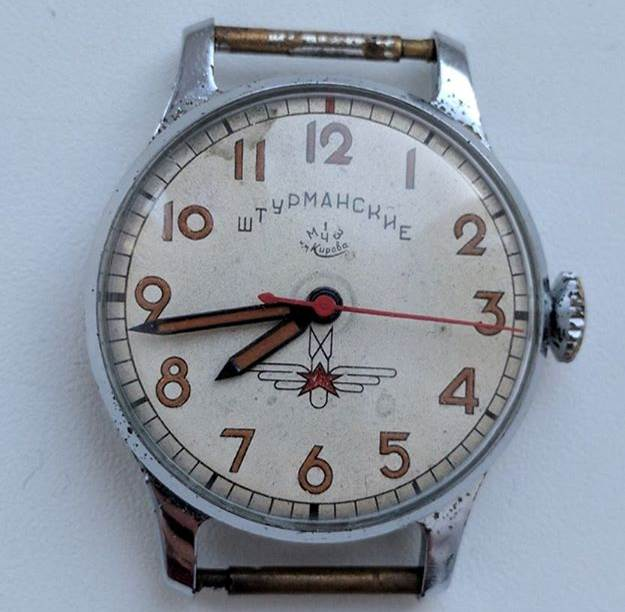
They were designed as functional watches for pilots and navigators and weren’t commercially available. One of the main functions was the stop-second function which allowed a watch to stop at any moment by pulling the crown, which was necessary for flight crews to synchronize their actions.
In 1954 "Sturmanskie" watches were upgraded, they had an improved 43M with 17 stones movement, as well as shock protection with a sealed cover, which did not allow moisture and dust to get into the case. The future first cosmonaut received a watch like this in 1957:
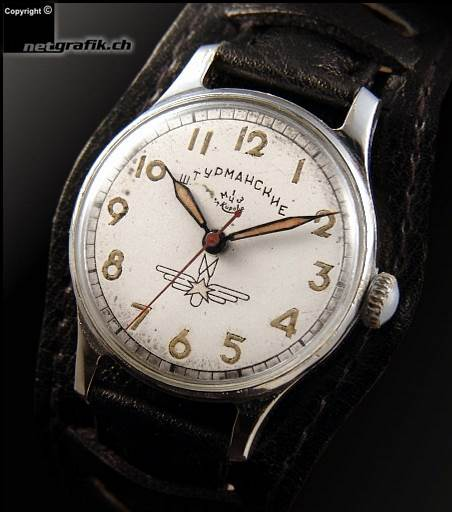
Check our blog post about that. After graduation, Yuri Gagarin was enrolled as a pilot in one of the aviation regiments of the Polar region and soon proved himself as an outstanding officer, receiving a commendation from the unit commander.
Yet the country's space achievements excited the imagination of the young excellent officer: at the end of 1959 Gagarin enrolled as a cosmonaut candidate and was accepted. In general, the process of selection was very serious, 3.5 thousand pilots were considered where only 20 people were chosen and then after, the best one had to be selected. So, Yuri Gagarin brilliantly passed all the physical and psychological tests to become the first.
On April 12, 1961 Yuri Alekseyevich successfully accomplished his mission, justifying the expectations placed on him. He had his "Sturmanskie" with him (they can be seen on his spacesuit in the photo above). After his historic flight, Gagarin gifted the watch to Air Force Commander Konstantin Andreevich Vershinin, who, together with Korolev, took a part in the cosmonauts selection and the launch of Vostok-1. Now this watch is in the Cosmonaut Training Center museum:
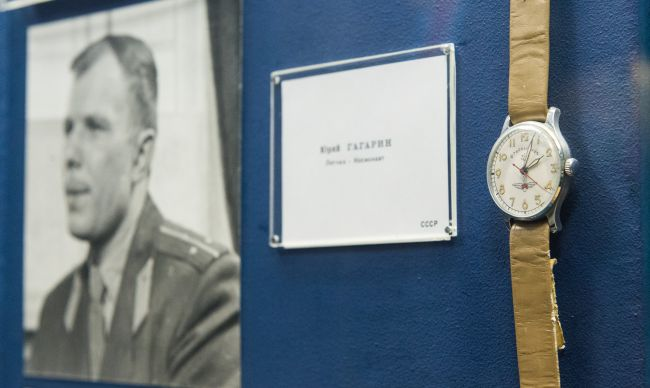
Another important detail, however: it is confirmed that Yuri Gagarin had more than one watch during his Vostok-1 flight. We conducted our own investigation on this subject and found out a number of interesting details, which we shared in a separate article.
Meanwhile, you can pay a tribute to this legendary event and the outstanding man, and there is the "Gagarin" collection in the "Sturmanskie" watch line, which models have recognizable features of the classic "Sturmanskie Gagarin":
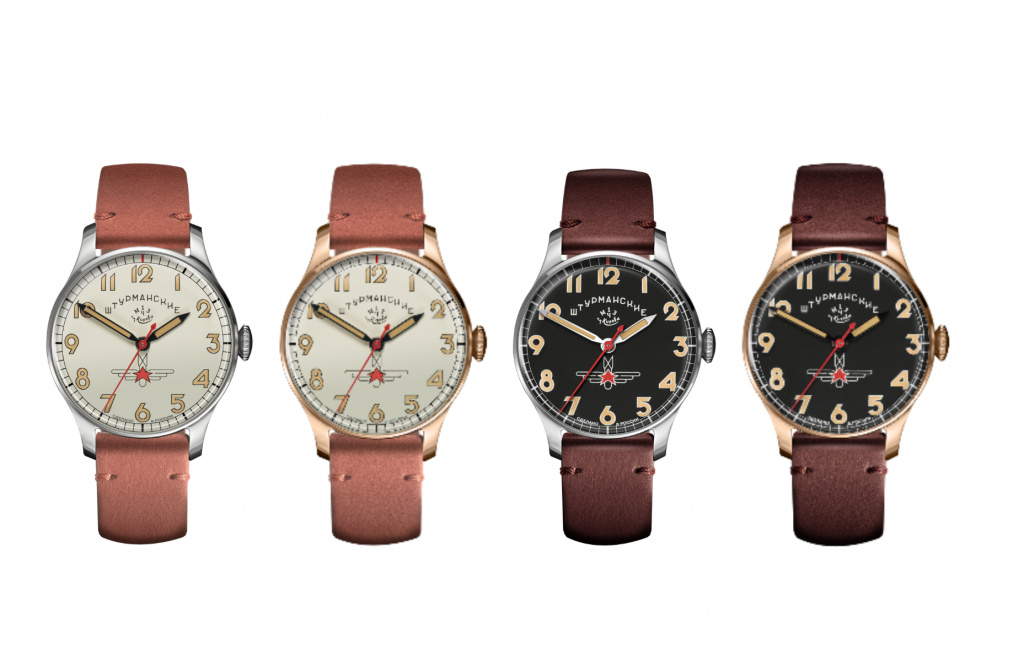
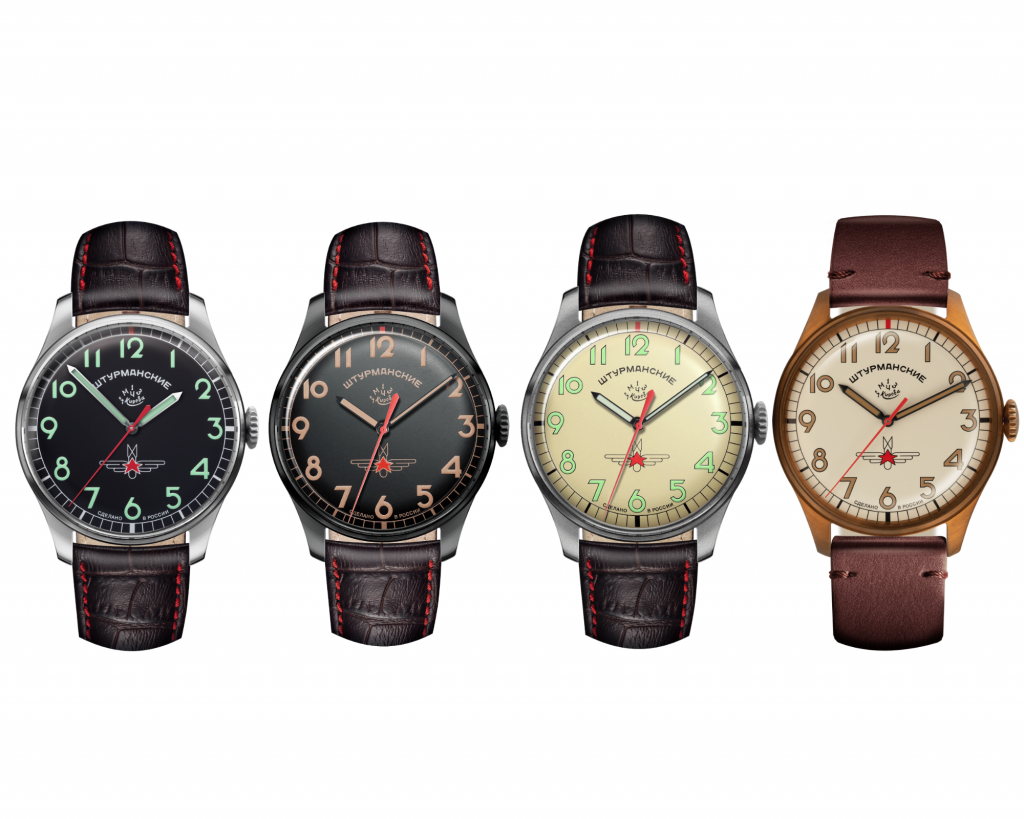
A back cover design is the highlight of the “Gagarin Heritage” collection. In honor of the first cosmonaut, it is decorated with a relief portrait of Yuri Gagarin:
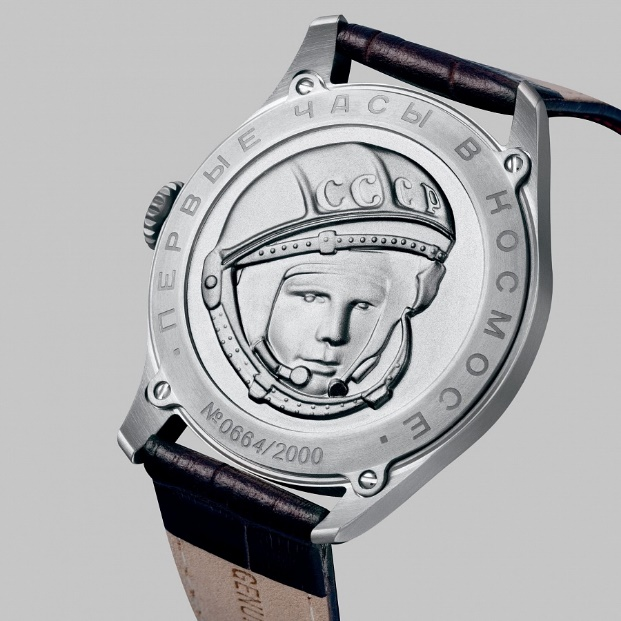
The "Gagarin 60 years" model was dedicated to the 60th anniversary of the first flight into space:
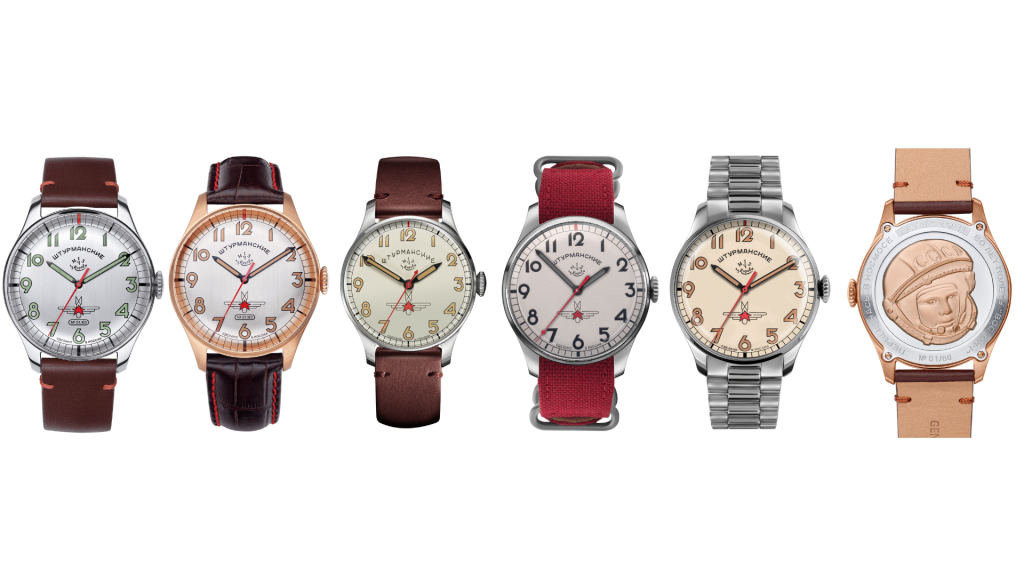
The next flights
Yuri Gagarin's success had to be built upon and consolidated by expanding the space exploration program. So, on August 6, 1961, Gherman Titov, who had been Gagarin's backup during the April flight, went into orbit. Titov stayed in space on the Vostok-2 spacecraft for over a day. He was the second man in space, but this does not minimize his contribution to history. After all, he was the first one who spent such a long time there, during which he tested the spacecraft’s technical systems and performed the necessary routine activities: eating and sleeping. By the way, he also took the first photos of Earth from space.
The watch for the "silver astronaut" was extremely important because it had to undergo a severe test on such a long flight. One of the most famous photos of Gherman Stepanovich shows that during the flight he wore a wristwatch, just like Gagarin, attached to his spacesuit: 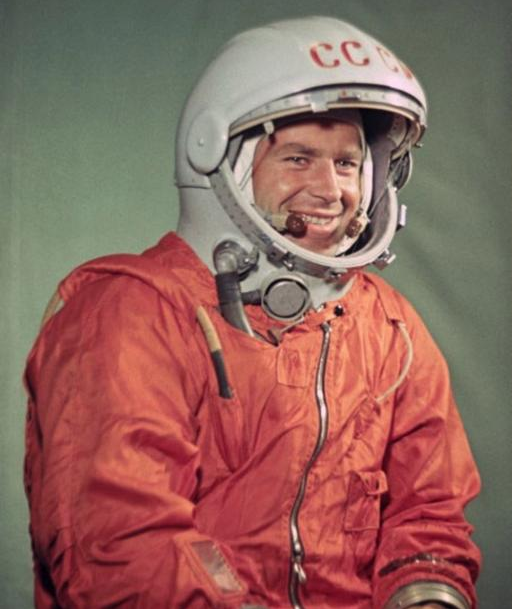
What kind of watch it was has yet to be investigated, but there is a great probability that it was also a "Sturmanskie" watch, because Titov was a graduate of Stalingrad military aviation school in Novosibirsk in the same year as Gagarin, 1957, and at that time all young pilots were issued watches made by the 1st Moscow Watch Factory.
For the same reason, other Soviet cosmonauts, who followed Gagarin and Titov, also used "Sturmanskie" watches during their flights, until they were replaced by other models, about which we will tell below.
NASA astronaut John Glenn was the third astronaut that went to space. His nearly five hour flight was on Mercury-Atlas 6 on February 20, 1962. Instead of a wristwatch, he carried a sports stopwatch Heuer 2915A, the first Swiss watch in space. It is now stored in the The National Air and Space Museum of the Smithsonian Institution in Washington, D.C.
After that, in May, 1962 another American astronaut Scott Carpenter flew into space on the Mercury-Atlas 7 also wearing a Swiss watch, that was specially designed for this mission - the Breitling Navitimer Cosmonaute with a 24-hour scale.
The first woman in space
Another memorable date is June 16, 1963, when Baikonur Cosmodrome launched the "Vostok-6" spacecraft with the first woman-cosmonaut Valentina Tereshkova on board.
Her journey was not an easy one. When one thousand candidates took part in the selection, only 30 were chosen for thorough preparation for the flight. Valentina was among them, and although she was a bit behind in her preparation, Khrushchev approved her candidacy.
She was a good choice, and when she had to face technical difficulties such as controlling the spacecraft and physical malaise during the flight, and when her stay in space lasted almost 3 days, she coped with all the challenges with dignity and then received a Hero of the Soviet Union title, just like the first male cosmonauts.
Researchers have 2 main versions about Valentina Tereshkova’s watch:
1) "Sturmanskie", the same as Yuri Gagarin's;
2) Women's watches of the Uglich watch factory, which after her flight were called "Chaika" in honor of Tereshkova herself - that was her callsign.
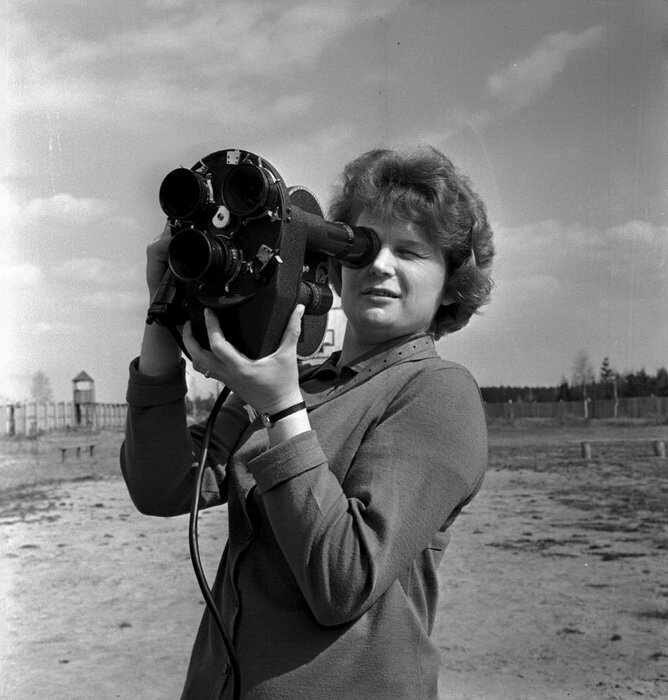
Probably, the truth combines both of these assumptions. Looking at Valentina Vladimirovna’s photos, she indeed had a miniature Soviet-made women's watch. However, it is unlikely that she was wearing them during her famous flight, especially considering that cosmonauts generally tried to take several watches with them and for convenience fastened one over a spacesuit (as in Gagarin and Titov’s photos above).
Open Space
The next step in space exploring, which the whole world was waiting for, was the spacewalk. It happened on March 18, 1965 during a flight on "Voskhod-2", where Pavel Belyaev was a commander, and Alexei Leonov his co-pilot. Leonov accomplished it wearing a special multi-layer "Berkut" spacesuit designed for this purpose. Moreover, an airlock was installed on the ship.
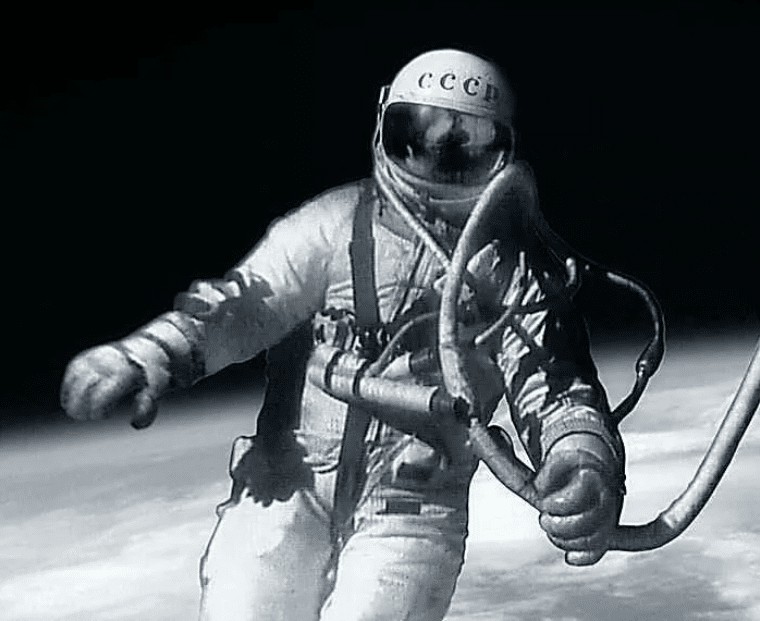
When Alexei Leonov stayed in outer space for 12 minutes and 9 seconds during which the planned experiments were performed, he returned to the ship because of the deformation of the spacesuit. It’s worth noting that during this entire flight a number of abnormal situations had occurred, so the astronauts had to show courage and professionalism to return to earth. Their landing took place further away from the planned point, and they were only found the next day. During this expedition, another world record was set, reaching nearly 500 km spacecraft altitude above the Earth.
So, what was the watch that Leonov wore in open space for the first time? It was the first mass-produced Soviet wrist chronograph "Strela", produced by the same 1st Moscow Watch Factory.
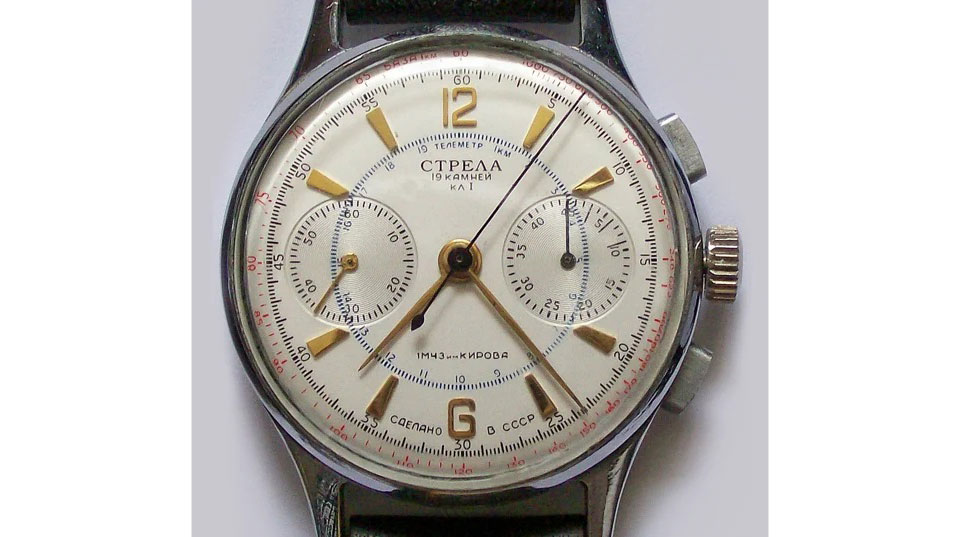
These watches had been produced since 1959, their movement 3017 was based on the Swiss Venus caliber, and significantly upgraded by the Soviet designers. This chronograph was equipped with a single-shot stopwatch and 45-minute counter, telemeter and tachometer scales, its case was rugged and capable of withstanding high loads and temperature variations.
"Strela" was made for the Air Forces staff such as pilots and cosmonauts and replaced the "Sturmanskie" for almost 20 years.
Today we commemorate the outstanding pioneers of the unknown and distant elements by producing the Sturmanskie "Open Space" watch collection, united by its design, restrained lines, ergonomics and the aesthetics of the best Soviet cosmonaut watches.
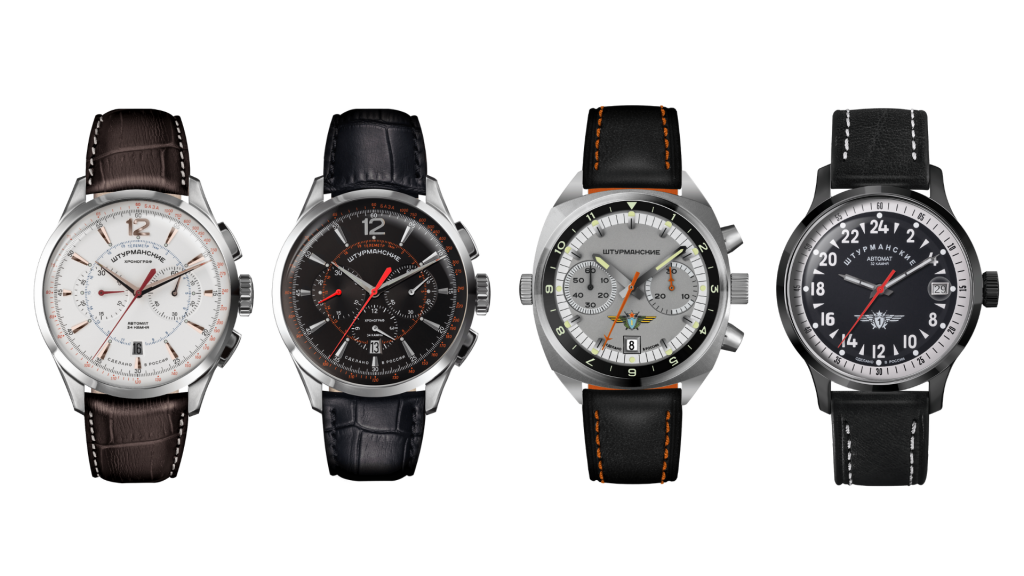
To the Moon for the first time
Looking back at the major space exploration milestones, it is hard not to mention one more remarkable date - July 21, 1969. On this day, the American astronaut of Apollo 11 Neil Armstrong was the first to set foot on the surface of the Moon, and then his partner Edwin Aldrin joined him.
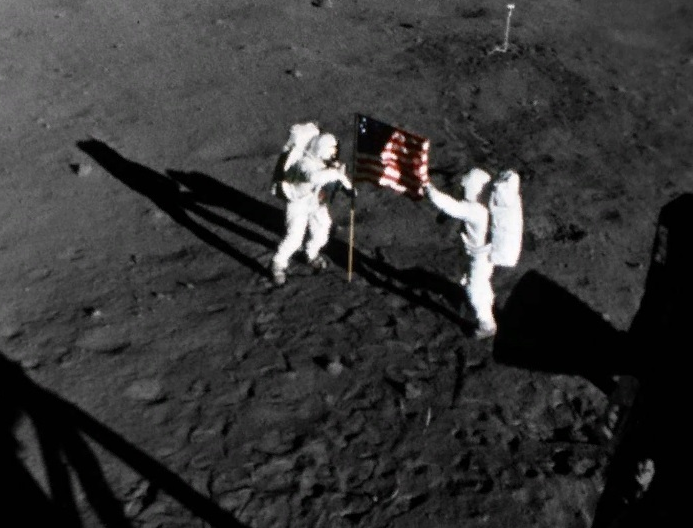
They arrived earlier, on July 20, then stayed on the Earth satellite for almost 22 hours, while pilot Michael Collins waited for them in lunar orbit. The astronauts stayed outside the ship for about two and a half hours, during that time they set up an American flag and various measuring instruments on the Moon, took soil samples, and also performed a memorial act leaving the medals of the famous space explorers who had died, including Gagarin and Komarov, Grissom, White and Chaffee.
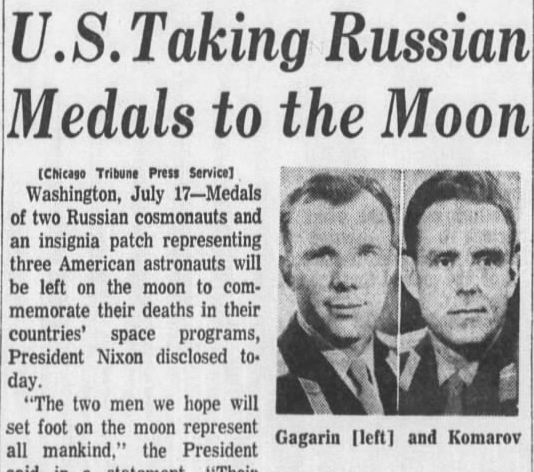
The story of the watch that was chosen to be on Armstrong's wrist at that historic moment requires separate attention. After the first American flights into space, planning the future space program, NASA took a serious approach to equip astronauts. They tested a number of wristwatches from various manufacturers under difficult conditions and opted for the Swiss Omega Speedmaster. The watch had been produced since 1957 and, being originally designed for car racers, had excellent protection against shocks and vibrations.
This decision caused some controversy in the community, and primarily among competing manufacturers. Finally, the choice was confirmed, and shortly after Alexei Leonov, in 1965, the first American Edward White was wearing this watch while a spacewalk, on June 4 from the Gemini 4 spaceship.
Neil Armstrong also set his foot on the Moon surface wearing the Speedmaster. In fact, it was his partner's watch, and Armstrong's watch was used by the astronauts inside the module. Since then, this model has had a second name, Moonwatch.
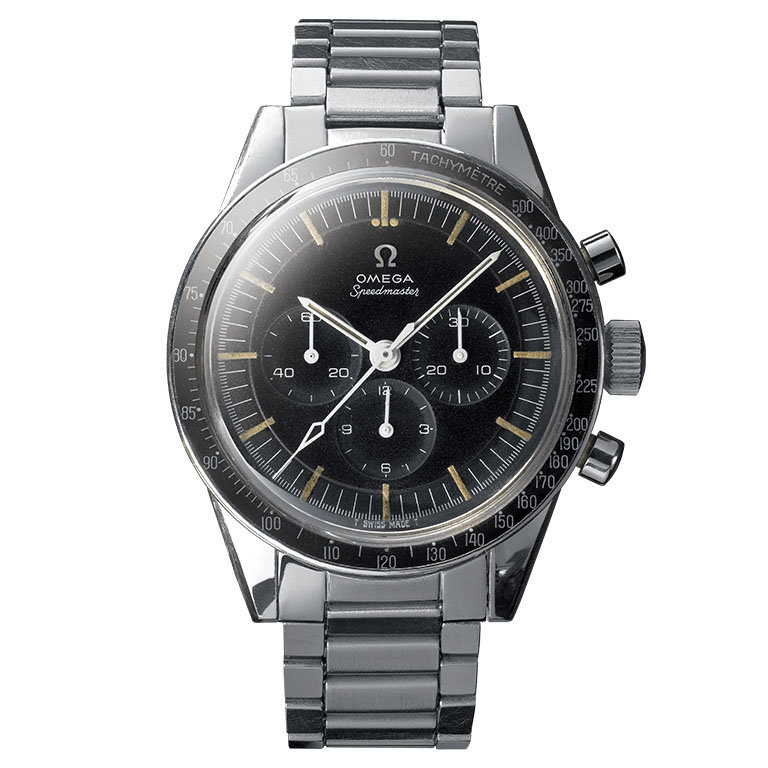
Soon after the first Moon landing, the back cover was decorated with a commemorative inscription:
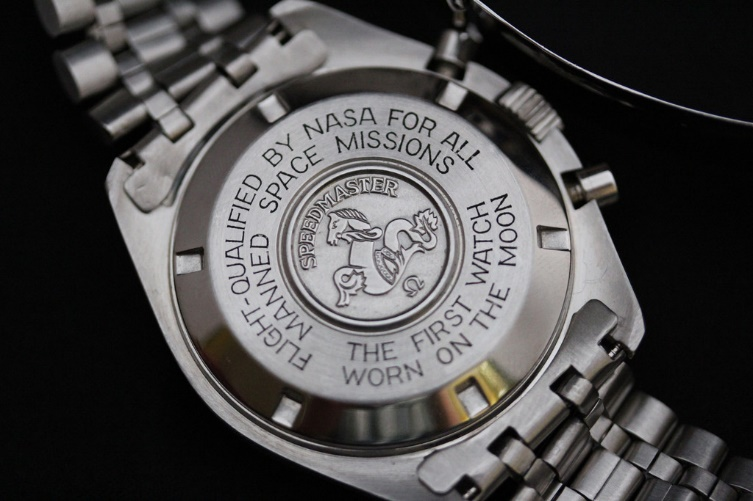
These watches are still in production today with more modern modifications.
However, Swiss Omega was not the only one that managed to visit the moon. On July 30, 1971, the Apollo 15 crew landed on the surface of the Earth satellite. This expedition is famous for the fact that the astronauts spent almost three days on the Moon, for the first time they used a vehicle to travel around it and collected extensive material for scientific research. According to the commonly accepted version, the Speedmaster of commander David Scott malfunctioned, and it was difficult to operate without a watch and move around the moon. The watch was supposed to help track the consumption of oxygen, water and battery power. So, Scott used his personal watch, an American-made Bulova Chronograph.
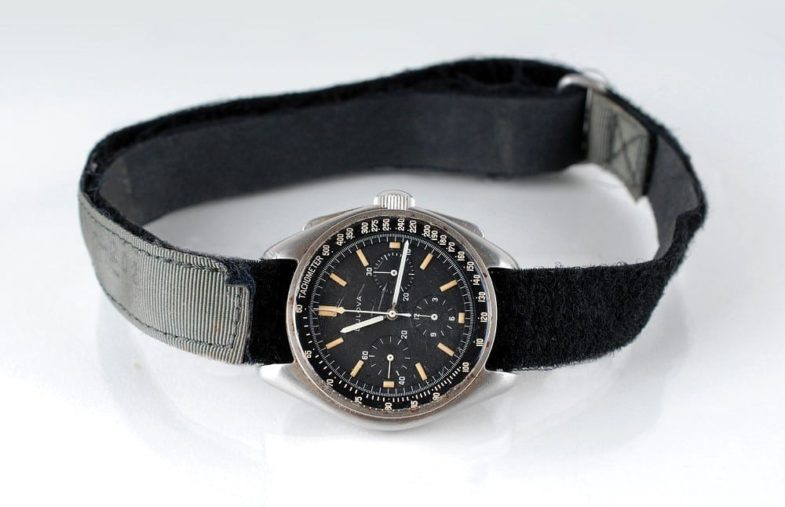
Actually, not only Soviet, Swiss and American watches were among the pioneers in space. Almost imperceptibly, a remarkable Japanese watch managed to "penetrate" there as well. In November 1973, during another American expedition to its “Skylab” station, which set a record for the longest stay in space at the time, 84 days. During that period, the official watch of the U.S. astronauts was an Omega Speedmaster, but by coincidence, “Skylab 4” crew pilot William Pogue didn't have one and instead took his personal Japanese Seiko 6139 chronograph with him, which successfully passed the extraterrestrial test and was later sold at a charity auction.
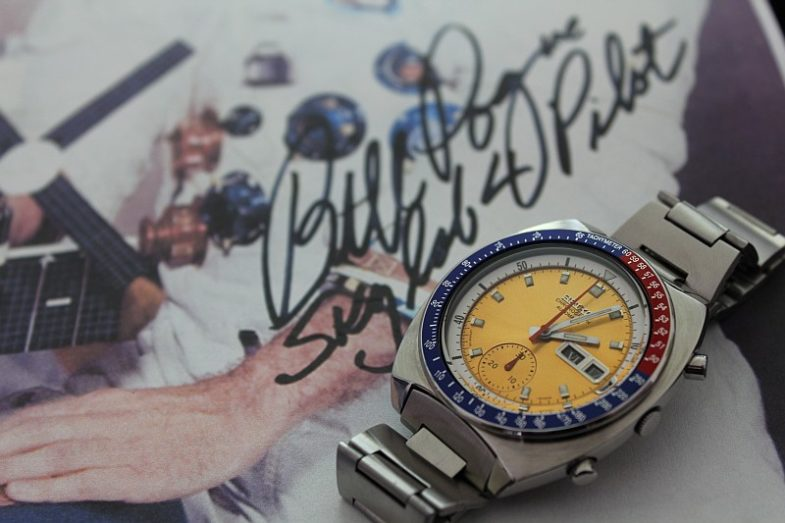
More to follow
Omega watches were later recognized by Soviet cosmonauts as well. For example, it was used by the American and Soviet crews during another historic event: the successful docking test of the “Soyuz” and “Apollo” spacecrafts in July 1975, which marked the beginning of space cooperation between the United States and the Soviet Union.
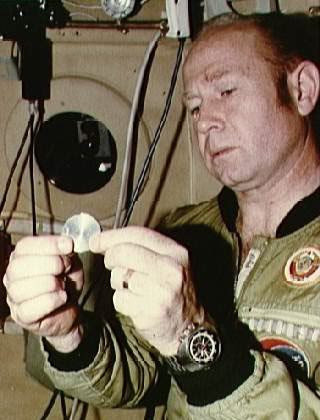
Nevertheless, Soviet watch products did not lose their popularity among the space explorers either. For example, the 3017 movement, already known to us from Alexei Leonov's “Strela” watch, was used until the end of the 1970s in chronographs of the 1st Moscow Watch Factory under the “Poljot” and “Sekonda'' brands.
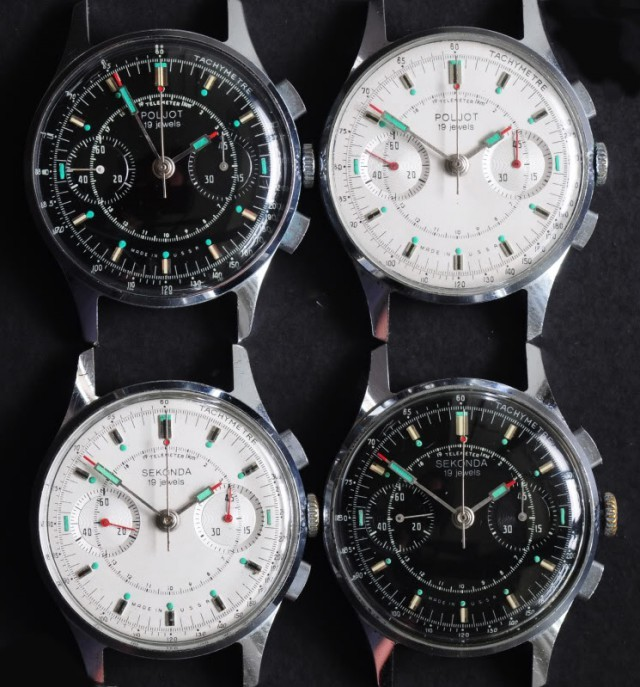
On March 2, 1978 cosmonaut Alexei Gubarev, commander of the “Soyuz-28” spaceship was wearing the “Sekonda” 3017 watch on his wrist, while flying to the “Salyut-6” orbital research station. A citizen of Czechoslovakia Vladimir Remek, the first and only cosmonaut of that country accompanied him. This flight is considered the first international flight under the “Intercosmos” program.
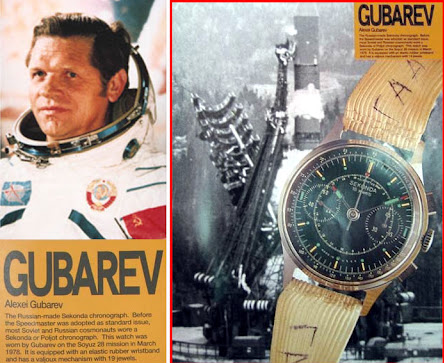
By the end of the 1970s, Soviet movement 3017 was replaced by another one, easier to produce and maintain, the movement 3133. Becoming a real pride of the USSR watch industry, it was well known as the "Russian chronograph" in other countries and is still in use today. The movement was also based on the Swiss calibre, and considerably improved by the Soviet watchmakers.
The "Ocean" was the first chronograph powered by 3133 made for the Navy officers, produced since 1976, and soon after, the "Sturmanskie" chronograph for the Air Force was manufactured using the same movement. The movement was later upgraded with a stop-seconds function and became known in this modification as the 31659.
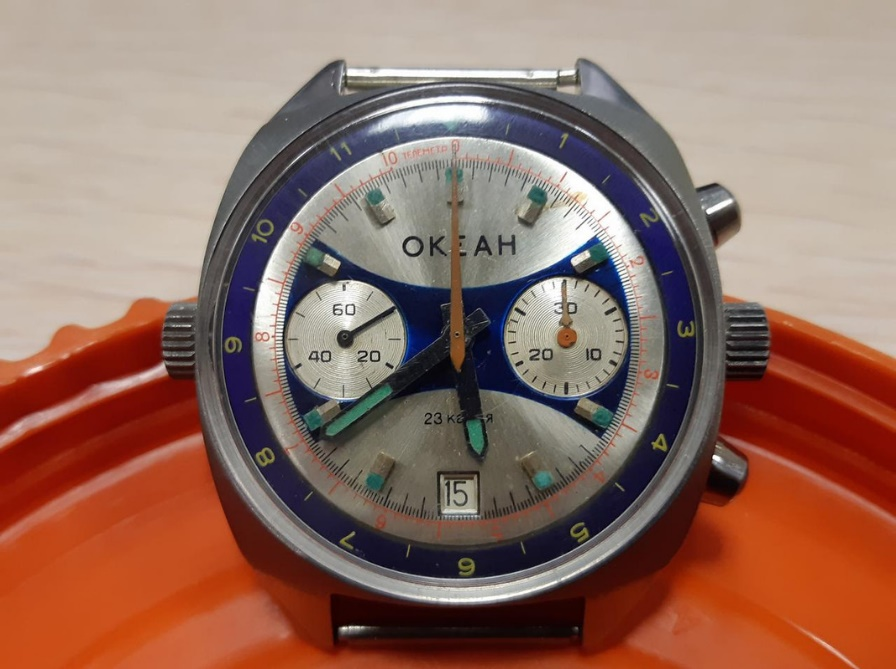
The watch powered by the 3133 movement is also a part of space exploration history. It was on Valery Polyakov's wrist during his record-breaking stay in space (more than 437 days) in 1994-1995. After that, the movement was recognized by cosmonauts of many nations. For example, in 1990 the watch 31659 was worn by Toyohiro Akiyama, the first journalist to travel in space from Japan.
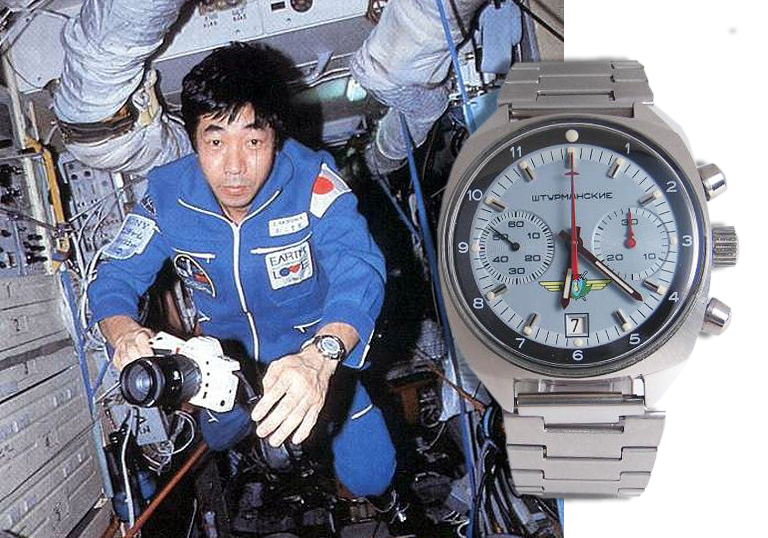
Today's "Sturmanskie" collection includes the mechanical chronograph "Ocean 3133", which repeats the extraordinary design of the "Ocean" from the 1970s and is based on the same movement.
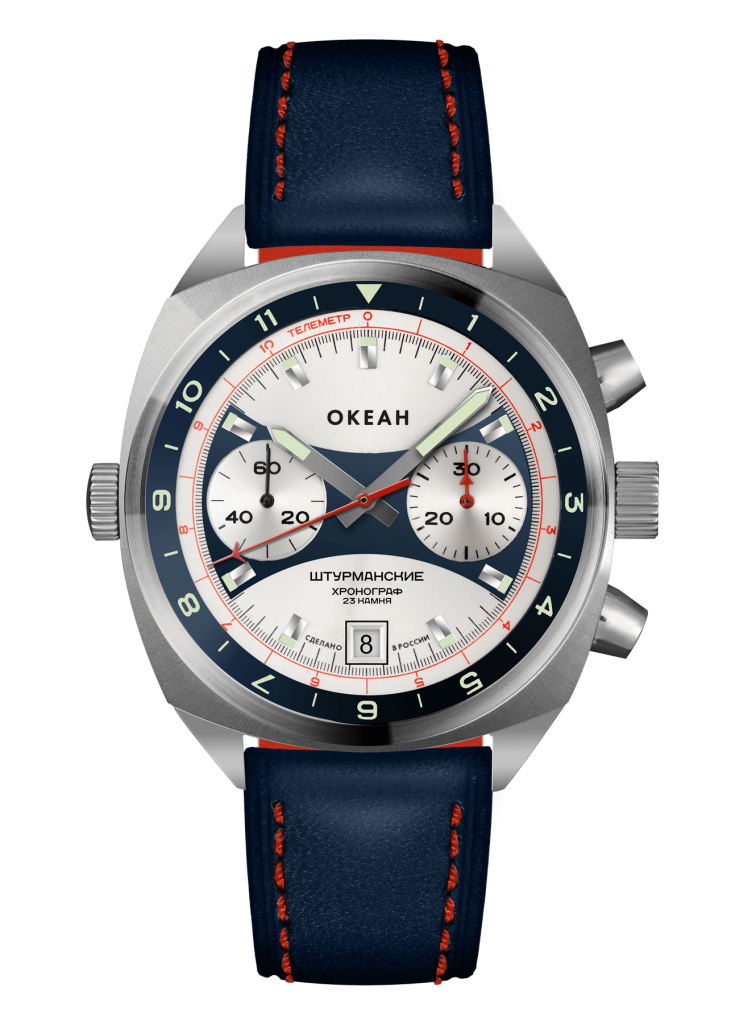
All in all, we have reviewed just a few remarkable pages in the history of space exploration, where brave and determined astronauts were assisted by the reliable movements developed by watchmaking professionals. Mankind has a long way to go in the future of this cooperation and discovery of new horizons, but you can touch history simply by wearing the “Sturmanskie”, a reliable and accurate watch with a distinctive design, which reflects the best of Soviet traditions.
